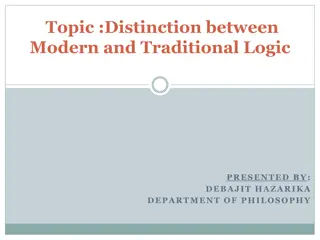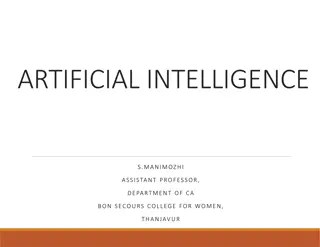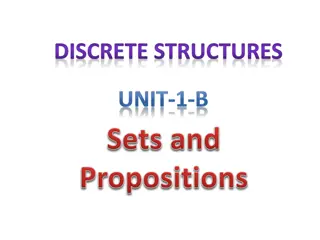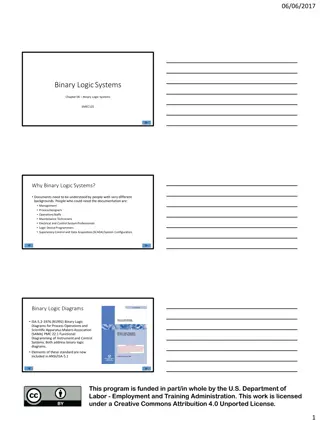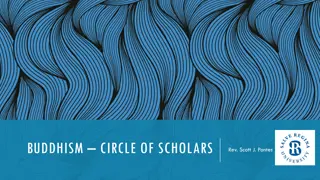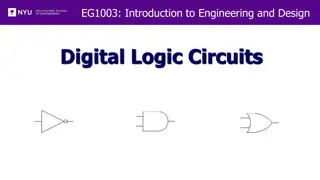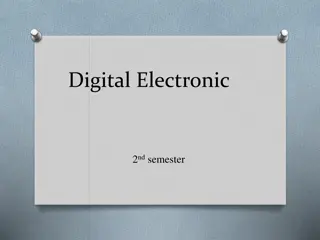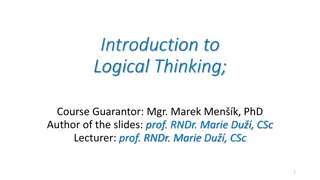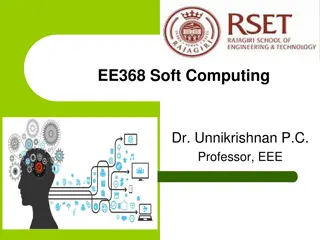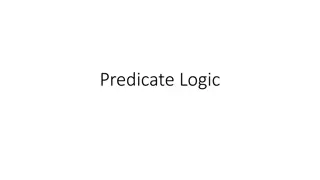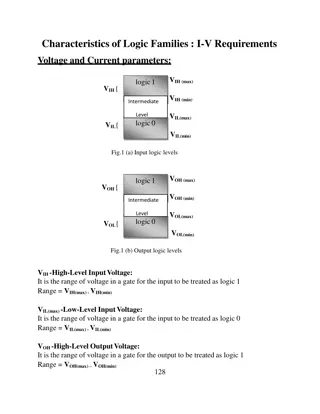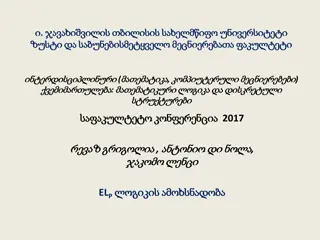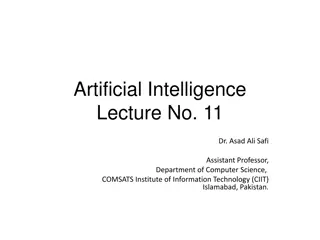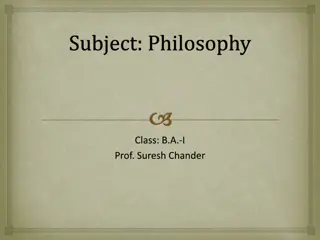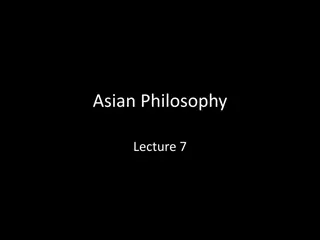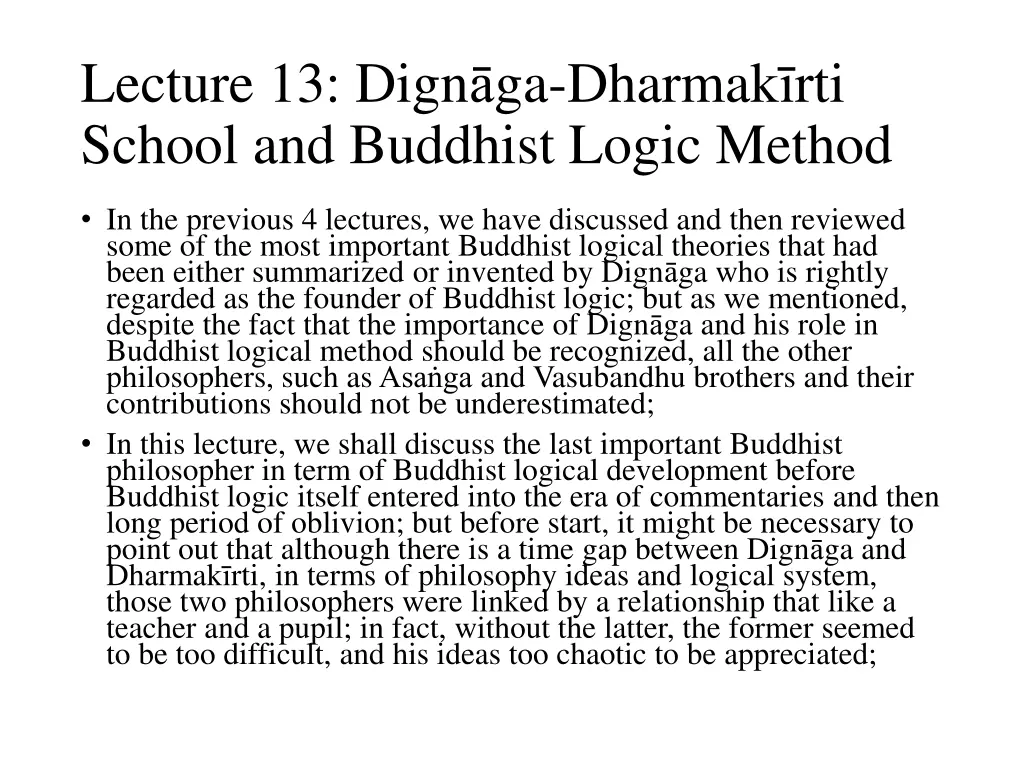
Dignga-Dharmakrti School & Buddhist Logic Method
Explore the significant Buddhist logical theories developed by Dignga and Dharmakrti, highlighting their contributions to the School of Epistemology. Understand the transition from Dignga to Dharmakrti and the key philosophical ideas that shaped their legacy in Buddhist logic.
Uploaded on | 0 Views
Download Presentation

Please find below an Image/Link to download the presentation.
The content on the website is provided AS IS for your information and personal use only. It may not be sold, licensed, or shared on other websites without obtaining consent from the author. If you encounter any issues during the download, it is possible that the publisher has removed the file from their server.
You are allowed to download the files provided on this website for personal or commercial use, subject to the condition that they are used lawfully. All files are the property of their respective owners.
The content on the website is provided AS IS for your information and personal use only. It may not be sold, licensed, or shared on other websites without obtaining consent from the author.
E N D
Presentation Transcript
Lecture 13: Dignga-Dharmakrti School and Buddhist Logic Method In the previous 4 lectures, we have discussed and then reviewed some of the most important Buddhist logical theories that had been either summarized or invented by Dign ga who is rightly regarded as the founder of Buddhist logic; but as we mentioned, despite the fact that the importance of Dign ga and his role in Buddhist logical method should be recognized, all the other philosophers, such as Asa ga and Vasubandhu brothers and their contributions should not be underestimated; In this lecture, we shall discuss the last important Buddhist philosopher in term of Buddhist logical development before Buddhist logic itself entered into the era of commentaries and then long period of oblivion; but before start, it might be necessary to point out that although there is a time gap between Dign ga and Dharmak rti, in terms of philosophy ideas and logical system, those two philosophers were linked by a relationship that like a teacher and a pupil; in fact, without the latter, the former seemed to be too difficult, and his ideas too chaotic to be appreciated;
Dignga-Dharmakrti School As we mentioned, between Dign ga and Dharmak rti, there was another Buddhist philosopher named varasena, who was a pupil of Dignaga and a tutor to Dharmakirt; probably it is true that when Dharmakirti s prompt mastery of Dignaga s work - Pram asamuccaya, which impressed varasena so much, the latter then encouraged his talented pupil to compose a commentary on the work, which Dharmakirti did; When Dharmakirti produced his masterpiece of the commentary, he not only explained those technical terms and their meanings, but he also explained his own opinions and ideas; thus on the one hand, Dharmakirti inherited what Dignaga left, while he also continued what Dignaga failed to develop and clarify further; So the ideas and thoughts which had been developed by those two philosophers known as Dign ga-Dharmak rti School; and because their focus on knowledge and the ways of knowledge, this trend of thought is also known as Pram av da or the School of Epistemology;
Dignga-Dharmakrti School: also known as Pram av da or the School of Epistemology, those two philosophers are mainly concerned about knowledge and how can one acquire knowledge and how certain; varasena bridged the gap between those two philosophers by being a tutor to one and a pupil of the other;
Life of Dharmakirti As with so many Indian philosophers or philosophers of the world in general, it is difficult to know much about the life of Dharmakirti for certain; some basics, however, are more or less plausible; As we mentioned, he developed Buddhist logical method further by extending the ideas that had been developed by his predecessor Dignaga, although it is probably the case that those two philosophers never met, and by the time of Dharmakirti s philosophy apprenticeship, Dignaga probably already passed away; You may have heard the English expression that: when the student is ready, the teacher will appear! So when Dharmakirti was looking for new knowledge, he was conveniently exposed to the logical ideas of Dignaga by his tutor varasena; but as soon as Dharmakirti emerged as a brilliant philosopher of logical reasoning, his tutor disappeared into obscurity; it seems that the folk wisdom goes both way; This will bring us to the third point about Dharmakirti: it is said that because of his talents, he was very arrogant; that might be true because despite commenting on Dignaga and his works, he was never shy in pointing out those ideas or opinions he disagreed with his intellectual predecessors;
Dharmakirtis treatises Because of lack of a reliable historical chronicle, it is difficult to know about the lives of many Indian philosophers; for instance, when we discussed about Nagarjuna and Vasubandhu, there were so many treatises attributed to them and it is important to know for sure which versions of the story we should follow; because perhaps out of respect, many philosophical works had been attributed to those important philosophers from time to time, which made the issue even more complicated; With Dharmakirti, although many of his Sanskrit works had been lost in the long history, translations, in particular those Tibetan translations, are available now; so according to Tibetan tradition, 7 works are thought to be important works of logical reasoning that composed or compiled by Dharmakirti; Most important of all, naturally are his commentaries on the masterpiece of his teacher s teacher Dignaga: Pram asamuccaya or Compendium of Epistemology;
Seven works of logic Pram av rttika (translation: Commentary on Epistemology) is a general commentary on epistemology but also about logical reasoning. As we mentioned, this is a commentary on the Pram asamuccaya by Dign ga. It is also considered to be the longest and most important work by Dharmakirti, and it is even regarded as the most important work of Buddhist logical reasoning in the whole history of Buddhist logic; Pram avini caya (translation: Ascertainment of Epistemology), as Scherbatsky pointed out, is an abridged version of the Pram av rttika. There is also an auto-commentary on it called Pram av rttikasvavrtti. The other 5 works are short: Ny yabindu (translation: Drop of Reasoning), Hetubindu (translation: Drop of Logical Reasons), Sa bandhaparik h vrtti (Analysis of Relations), Sa t n ntarasiddhin maprakara a (Proofs of the Mind of the Others), and V dany ya (translation: Logic of Argumentation).
Divisions of the inference If you read the recommended readings, you may have noticed that according to Dignaga, an inference can be broadly divided into two types as sv rtha or inference for oneself and par rtha or inference for the others; Because the first one, or inference for oneself is a kind of mental cognition that does not need to demonstrate to others the mechanism behind of the inference, it is more of a cognitive argument such as Nagarjuna and other philosophers did; for example, inference for oneself may be carried out by means of a mental process or the sense of cognition: when you see the smoke from afar, you may infer that there would be a fire somewhere; reason and examples are not necessary; On the other hand, inference for the other is more complicated so there is a syllogism a method is needed: there is fire due to smoke because fire and smoke are always together, such as in a kitchen but unlike in a lake, where both are absent; here not only the thesis and reason are needed to be stated clearly, but the illustrative examples are also necessary;
Inferences for oneself and for others Inference for others need to convince others and the rules applicable in other general cases Inference for oneself When you see the smoke from afar, you must recognize that there is a fire over there There must be a fire in the mountain Reason: no need to be stated Because smoke Fire-smoke together: like in a kitchen and unlike in a lake this rule must be applicable to other cases Examples: cognized automatically
A threefold division of inference While maintaining the two divisions of the inference, Dharmakirti proposed a third way of looking at the division of inference, and he therefore came out a threefold division of inference (see Matilal, 1998:109): 1), Inference based on one s own nature: this type of inference is the one that rests on the a nature of the thesis; for example, an apple is a fruit, but first of all it has to be a fruit; it means that an apple (not a brand of smart phone) is meaningless unless it is a fruit and then it is a specific fruit of apple but not a peach; 2), Inference based on a causal relationship, which is one of the classical examples we discussed; for instance, the fire can be inferred from smoke, because one causes the other; 3), Inference based on non-perception, which means that despite the inference, non-perceptive object can be seen or observed; the classical example given here is the rabbit on the moon a legend that popularly well said but never proved non-perceptive;
Further explanations As you can see, those three divisions are somewhat different from that of his predecessor Dignaga; first of all, while Dignaga s divisions of inferences for oneself and for others suggested a twofold division of mental process (convincing oneself that one s argument is valid) and syllogism (convincing others that what your formulated is in fact valid), the threefold division is more detailed; Secondly, inference based on one s own nature is similar to a concept, its intention and extension: such as a white horse should be a horse, because first of all, a white horse is a horse; then its colour; but we know that a horse is not necessarily a white horse because one is a category and another is a subcategory; Thirdly, inference based on the non-perception is rather profound, for it cast doubt on the otherwise accepted wisdom that a fire can be ascertained due to some smoke; we shall discuss further in next lecture;
Three types of inference: this threefold division is not only detailed but also raised some further questions as to how to ensure the cogent level of Buddhist logical reasoning. For instance, inference based on non- perception would make further requirements necessary if a inference is to be considered valid and sound. One s own nature Inference Non- Cause relationship perception
Summary and facts check In this lecture, we have discussed the last important Buddhist philosopher/logician who, together with Dignaga, had greatly systematized the Buddhist logical method; it is true that since then Buddhist logic spread to other places and flourished from time to time, but all the later works are either commentaries of the early works by Dignaga and Dharmakirti or studies of those works; Although it is difficult to date when Dharmakirti had lived, it is generally assumed that due to varasena, the great works of Dignaga were transmitted to Dharmakirti; based on the important ideas of Dignaga, Dharmakirti had further refined the Buddhist logical method; As for his works, of which 7 are related to either epistemology or logical reasoning; the longest one and most important is entitled: Pram av rttika; those are the commentaries on Dignaga s work: Pram asamuccaya; That would be all for this week; any question, let me know!
Exercises: Do the following exercises and submit them via email (chuanqing@bcs.edu.sg) to me by 5:00 pm, on 2ndDecember (Wednesday); as usual, please send the exercises of the two courses (Buddhism and Economics & Introduction to Buddhist Logic) together in one Word doc. file; 1, Read the course materials and the Buddhist Logic by Scherbatsky, volume 1, pp.34-39; then write a short biography (no more than 100 words) about the life of Dharmakirti. 2, Generally, there are 7 works of logical reasoning or epistemology attributed to Dharmakirt. Out of those 7, which one is the longest and also is considered to be the most important? And that work is actually a commentary on which early work?

